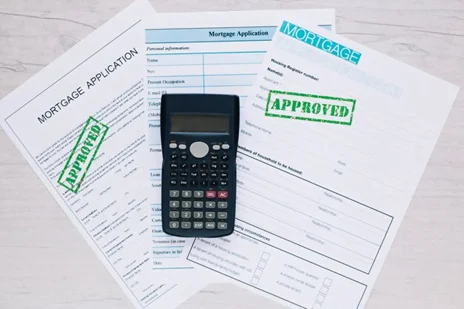
Form 709, also known as the USA Gift (and Non-Intergenerational Passage) Tax Return, is a form that taxpayers use to report taxable gifts to the Internal Revenue Service (IRS).
Next, we will take a closer look at exactly what this form 709 is, how to fill it out, and its features.
Tax Form 709
Form 709 is a tax form used to report gifts that are more than the annual exemption requirement. The annual release amount is the maximum amount of gifts that can be donated to the direction of the year without paying gift tax. For 2022, the annual release amounts to $16,000. Any gift over this amount is subject to the gift tax.
Tax Form 709 is prepared by the donor, not the recipient, and is required to be filed if the gift is above the annually required release amount. The giver is responsible for the gift tax, not the recipient.
Completing Tax Form 709
Filling out the 709 tax form can be a little confusing, especially for those who have never done this before. Here are the steps you need to follow to complete the 709 form:
Step 1. Determine if you need to apply
The first step is to qualify if you need to file Form 709. You should if:
- You have created a gift to an individual or legal entity over the one-year release amount, which draws up $ 16,000 for 2022.
- You created a gift for your non-U.S. husband or wife, and the gift exceeded the one-year release requirement, which amounts to $159,000 for 2022.
- You have created a gift to a trust fund, and the amount of the gift is higher than the annually required exemption amount.
Step 2: Gather the information you need
To complete tax form 709, you will need the following information:
- Name, address, and social security number (or employer identification number) of the donor and recipient.
- Presentation date.
- Present price.
- Any deductions or exceptions applicable to the gift.
Step 3: Fill out the form
Tax form 709 consists of 3 parts:
Part 1: Donor Information
In Part 1, you will need to give information about yourself, the donor. This includes your name, address, and social security number.
Part 2: Paying off taxable gifts
In the second part, you will need to give information about the gift. This includes the name and social security number (or employer identification number) of the recipient, the date of the gift, and the price of the gift.
You also need to calculate the required amount of gift tax. Gift tax is calculated based on the price of the gift and the applicable tax rate, which ranges from 18% to 40% depending on the price of the gift.
Part 3: Non-generation transfer tax
Part 3 of Form 709 is used to report any generation transfer tax that may be due. This tax applies to gifts made to persons who are younger than the giver by more than one generation, such as grandchildren.
Step 4: Fill out the form
Subsequently, such as you filled out the form 709, you are required to file it with the IRS. The deadline for filing Form 709 is April 15 the year following the year in which the gift was given. However, if you are requesting an extension of your tax return, the deadline for filing Form 709 is extended to the same date as your tax return.
Features of Tax Form 709

Tax Form 709 has several unique features that make it different from other tax forms. Here are some features of Tax Form 709:
1. Separation of gifts
One of the unique features of Form 709 is the separation of gifts. Gift sharing allows couples to pool their annual exemption amounts and give an amount equal to twice the annual exemption amount without paying gift tax. To use the gift section, both spouses must agree to do so in writing and file separate tax forms 709.
2. Portability
Another unique feature of Form 709 is portability. Portability allows the surviving spouse to use any unused portion of the deceased spouse’s lifetime gift tax exemption. This means that if either spouse does not use their full lifetime gift tax exemption, the unused portion can be passed on to the surviving spouse, who can use it in addition to their own lifetime gift tax exemption.
3. Special rules for gifts to minors
Tax Form 709 also contains special rules for gifts to minors. Gifts to minors are subject to the same gift tax rules as gifts to adults, but there are additional considerations. If the gift is made to a minor, the gift tax is paid by the giver, not the minor. Additionally, if a gift is made to a minor and the giver is the minor’s parent, the gift may be subject to a “child tax”, which taxes the unearned income of children under 18 at their parent’s tax rate.
4. Reporting foreign gifts
Form 709 also requires foreign gifts to be reported. If a U.S. citizen receives a gift from a foreigner or foreign property that is worth more than $100,000, the recipient must report the gift to the IRS using Form 3520. The giver of a foreign gift may also be subject to gift tax, depending on the value. gift.
5. Penalties for failure to provide documents
Finally, it is important to note that there are penalties for failure to file a Form 709 return. If you are required to file Form 709 and do not, you may be subject to a penalty of 5% of gift tax due for each month of delay in return, up to a maximum penalty of 25% of gift tax due.
Report gifts to the IRS!
Form 709 is a unique form that is used to report taxable gifts to the IRS. If you have given a gift over the annual exemption amount, it is important to understand the rules and requirements for filing Form 709. By following the steps in this article and understanding the unique features of Form 709, you can ensure that you comply with gift tax rules. and avoid fines for non-submission of documents. As always, it is a good idea to consult with a tax professional for specific advice and guidance for your particular situation.
Read more about the What Is Form 940 In The US


